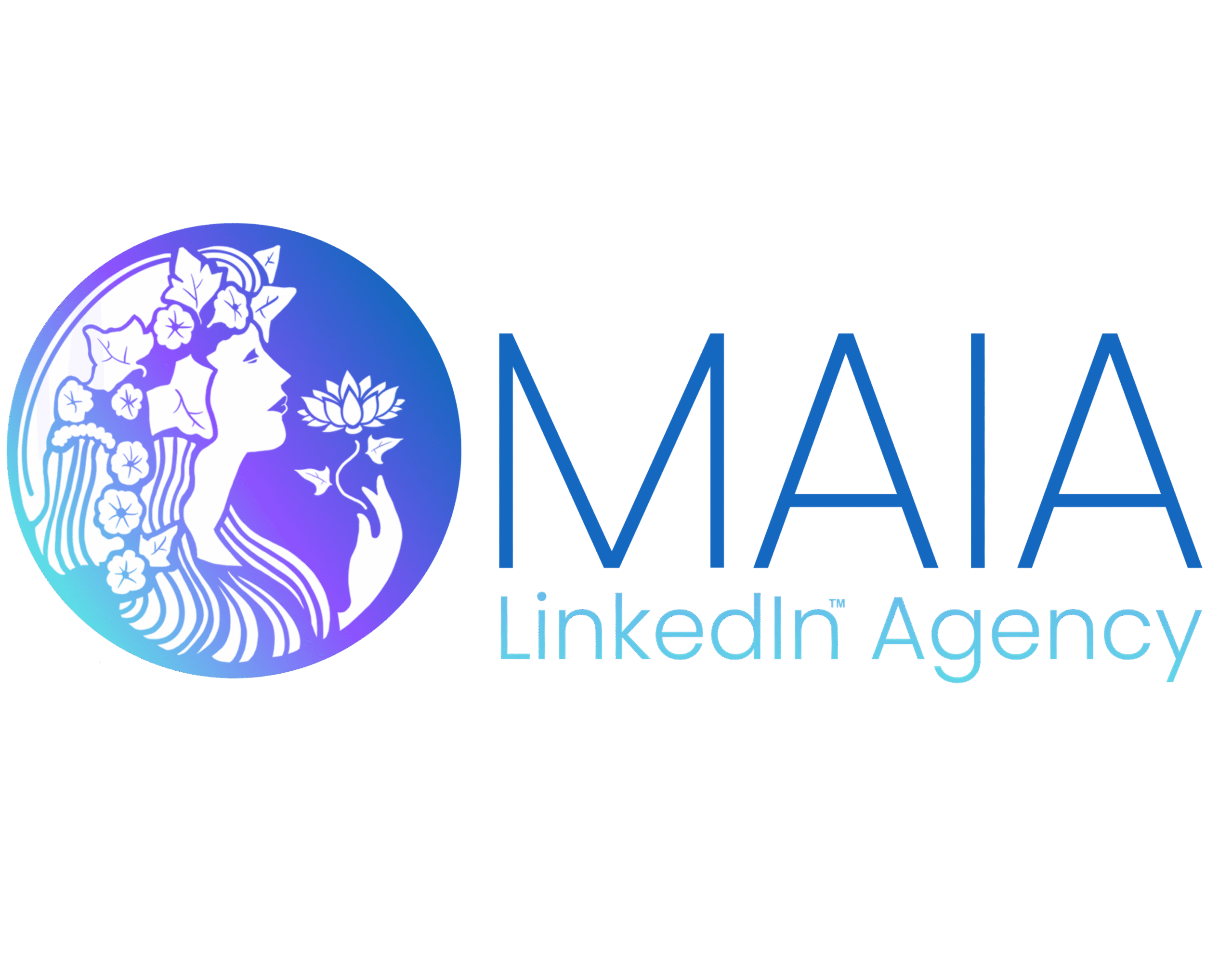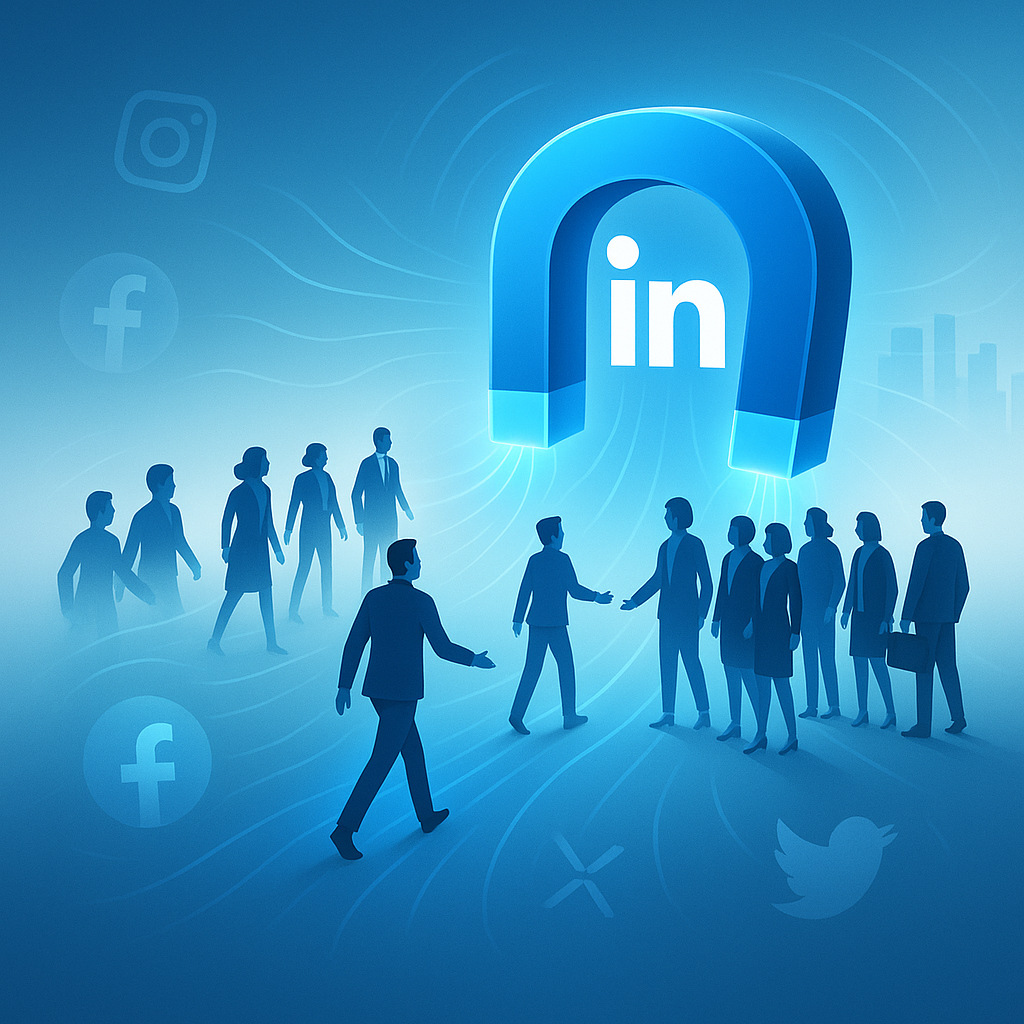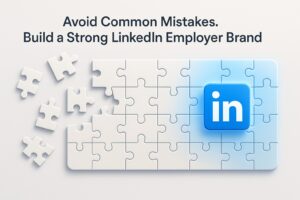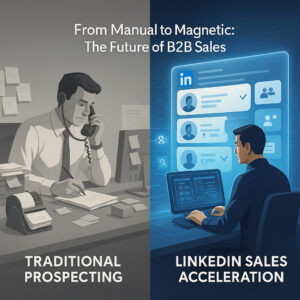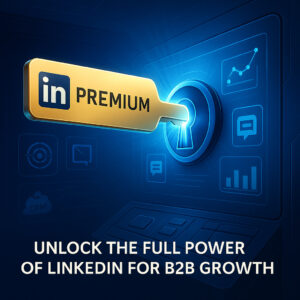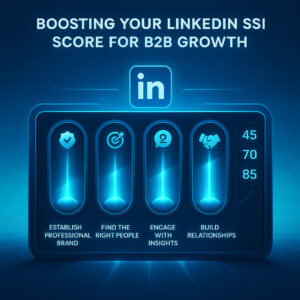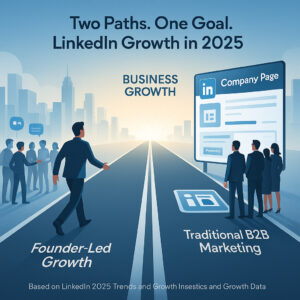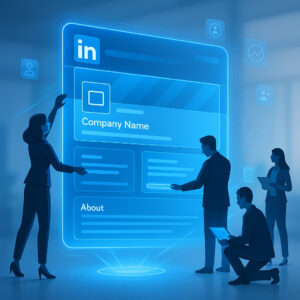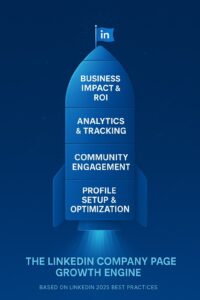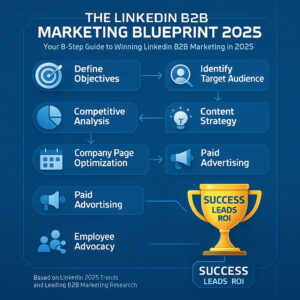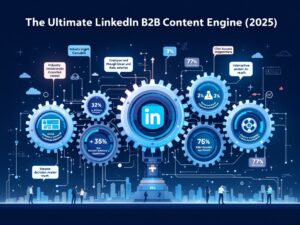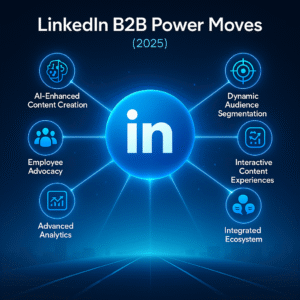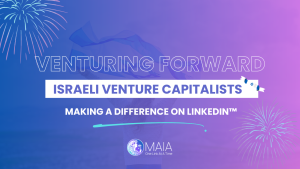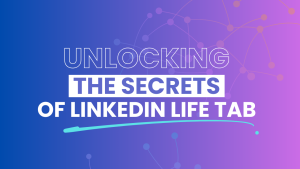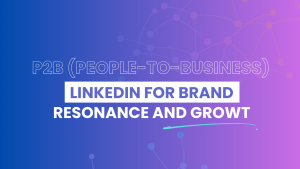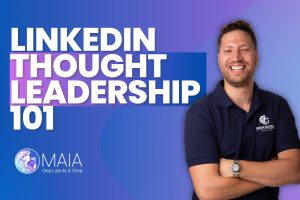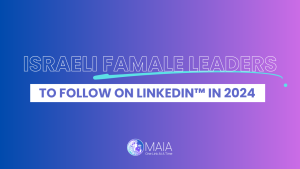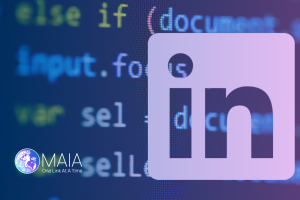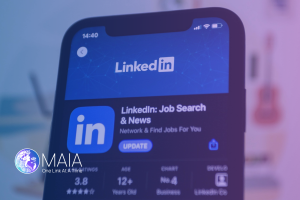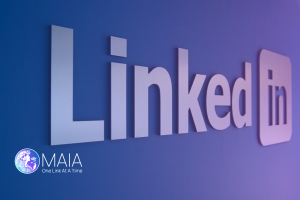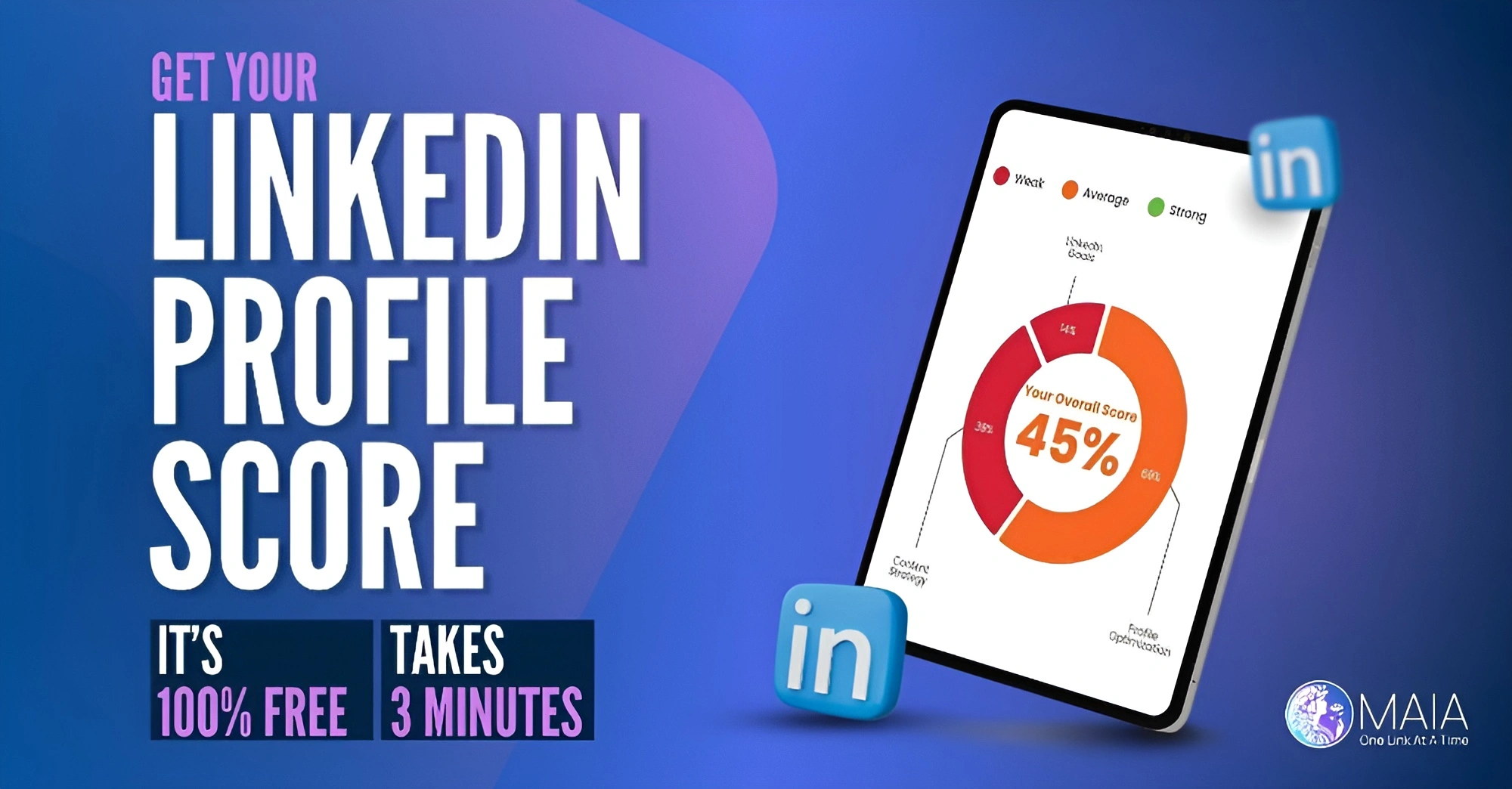Employer Branding on LinkedIn vs. Other Platforms: The Ultimate Guide for B2B Growth
Effective employer branding has become a critical differentiator for B2B companies competing for top talent. As the professional landscape evolves, where and how you showcase your company culture matters tremendously. LinkedIn has emerged as the frontrunner for B2B employer branding—but how does it truly compare to other platforms?
This comprehensive guide explores the unique advantages LinkedIn offers for employer branding compared to alternatives like Facebook, Instagram, and industry-specific platforms. We’ll examine the latest data, share actionable strategies, and provide a clear roadmap for leveraging LinkedIn to simultaneously strengthen your talent acquisition and business growth objectives.
Why Employer Branding Matters for B2B Companies
Employer branding represents how your company is perceived as a place to work. For B2B organizations, a strong employer brand serves dual purposes: attracting skilled professionals and signaling stability and expertise to potential clients.
According to LinkedIn’s 2024 Talent Trends Report, companies with strong employer brands see 50% lower cost-per-hire and 28% lower turnover rates. Furthermore, 75% of job seekers consider an employer’s brand before applying for a position.
But the benefits extend beyond recruitment. A 2023 Harvard Business Review study found that companies with strong employer brands experienced 20% faster revenue growth compared to those with weaker employer brands. This demonstrates the powerful connection between how you’re perceived as an employer and your business performance.
LinkedIn vs. Other Platforms: The Numbers Don’t Lie
When comparing platforms for B2B employer branding effectiveness, LinkedIn consistently outperforms alternatives across key metrics:
Audience Composition and Engagement
-
LinkedIn: 1 billion professionals with 42% of users visiting the platform daily. 6 out of 10 users actively seek industry insights.
-
Facebook: Broader demographic reach but only 25% of users engage with professional content.
-
Instagram: Strong visual engagement but predominantly B2C-focused with only 18% of users following professional accounts.
-
Twitter/X: Fast-paced environment with limited content lifespan and decreasing professional engagement (down 15% since 2023).
LinkedIn’s professional focus creates an environment where career-related content is not only accepted but expected, making it inherently more effective for employer branding initiatives.
Content Performance and Targeting
Recent data from Social Media Examiner’s 2024 report shows that LinkedIn content focused on company culture and employee experiences receives 3x more engagement than similar content posted on Facebook. The report also notes:
-
LinkedIn’s average engagement rate for employer branding content: 4.2%
-
Facebook’s average engagement rate for similar content: 1.4%
-
Instagram’s average engagement rate: 3.1% (but with less relevant professional audience)
Additionally, LinkedIn’s targeting capabilities for employer branding content are unmatched. The platform allows you to precisely target by industry, job function, seniority, company size, and skills—essential filters for B2B talent acquisition.
The LinkedIn Advantage: 5 Unique Employer Branding Features
LinkedIn offers several platform-specific features that provide distinct advantages for employer branding:
1. LinkedIn Life Pages
Life Pages allow companies to showcase their culture, values, and employee experiences in a dedicated section accessible directly from their company profile. This creates a centralized hub for potential candidates to understand your workplace environment.
According to LinkedIn’s internal data, companies that regularly update their Life Pages see a 30% increase in job application rates compared to those with static content.
2. Employee Advocacy Tools
LinkedIn’s Employee Advocacy portal makes it simple for team members to share company content with their networks. This dramatically extends organic reach while adding personal credibility to your messaging.
Research from Edelman’s 2024 Trust Barometer shows that content shared by employees receives 8x more engagement than content shared through company pages alone.
3. LinkedIn Learning Integration
Showcasing your company’s commitment to professional development through LinkedIn Learning integration signals investment in employee growth. This feature allows you to highlight courses completed by team members and professional development initiatives—a key attraction point for high-caliber candidates.
4. Targeted Job Recommendations
LinkedIn’s algorithm serves job recommendations based on user profiles, meaning your openings are shown to candidates who most closely match your requirements. This precision targeting is unavailable on generalist platforms like Facebook or Instagram.
5. Advanced Analytics
LinkedIn provides comprehensive analytics specifically for employer branding efforts, including talent brand engagement rates, follower demographics, and competitor benchmarking. These insights allow for data-driven optimization of your employer branding strategy.
Ready to elevate your company’s employer brand on LinkedIn? Connect with our LinkedIn employer branding specialists to develop a tailored strategy that attracts top talent while strengthening your B2B market position.
Building an Effective Employer Branding Strategy on LinkedIn
Leveraging LinkedIn’s advantages requires a strategic approach specifically designed for the platform:
Step 1: Define Your Employer Value Proposition (EVP)
Your EVP articulates what makes your company unique as an employer. On LinkedIn, your EVP should specifically address what matters to professionals in your industry.
Conduct internal surveys to identify your company’s strengths from current employees’ perspectives. Then, research what professionals in your field value most. According to a 2024 McKinsey survey, the top priorities for B2B professionals include:
-
Meaningful work with visible impact (68%)
-
Flexible working arrangements (61%)
-
Growth opportunities and clear advancement paths (57%)
-
Competitive compensation and benefits (52%)
-
Supportive culture and management (49%)
Step 2: Create a Content Calendar Specifically for Employer Branding
Develop a consistent posting schedule that includes:
-
Employee spotlights: Showcase team members’ achievements, backgrounds, and journeys with your company
-
Behind-the-scenes content: Share glimpses of office life, team events, and work processes
-
Professional development stories: Highlight training programs, promotions, and skill development
-
Leadership insights: Feature thought leadership from executives about company vision and industry trends
-
Day-in-the-life content: Detailed looks at what working in different roles actually entails
The optimal posting frequency for employer branding content on LinkedIn is 3-4 times per week, according to Buffer’s 2024 Social Media Frequency Guide.
Step 3: Activate Employee Advocacy
Employee advocacy multiplies your reach and adds authenticity to your employer branding efforts. Implement a formal program that includes:
-
Clear guidelines for sharing company content
-
Pre-approved content that employees can easily share
-
Recognition for active participants
-
Training on personal branding that aligns with company values
Companies with active employee advocacy programs generate 5x more website traffic and see 25% more growth in revenue, according to LinkedIn’s Advocacy Statistics.
LinkedIn vs. Industry-Specific Platforms
While LinkedIn dominates general professional networking, some B2B companies wonder if industry-specific platforms might yield better results for employer branding. Let’s compare:
LinkedIn vs. Specialized Platforms
Factor LinkedIn Industry-Specific Platforms Audience Reach 950+ million professionals across industries Smaller, more targeted audience (typically under 5 million) Targeting Precision Advanced filtering capabilities Pre-filtered by industry interest Content Engagement Moderate to high (2-5% average) Potentially higher within niche (4-8%) Tool Integration Comprehensive ecosystem of recruitment and branding tools Limited features focused on specific industry needs Cross-functional Hiring Access to talent across departments (tech, marketing, etc.) Limited to industry specialists
The optimal approach often involves using LinkedIn as your primary employer branding platform while supplementing with industry-specific platforms for specialized roles or targeted campaigns.
Case Study: TechSolutions Inc.
TechSolutions Inc., a B2B software company, implemented a dual-platform employer branding strategy in 2024:
-
Primary platform: LinkedIn for company-wide employer branding
-
Secondary platform: GitHub for technical recruitment
Results after six months:
-
42% increase in qualified applications through LinkedIn
-
65% improvement in engineer application quality via GitHub
-
37% reduction in time-to-hire across all departments
-
28% increase in employee referrals through LinkedIn employee advocacy
This hybrid approach allowed TechSolutions to benefit from LinkedIn’s broad professional reach while tapping into GitHub’s specialized developer community for technical roles.
Measuring ROI on LinkedIn Employer Branding
To justify investment in LinkedIn employer branding, establish clear metrics that connect to business outcomes:
Key Performance Indicators to Track
-
Talent Acquisition Metrics:
-
Application conversion rate from LinkedIn
-
Quality of hire scores for LinkedIn-sourced candidates
-
Reduction in time-to-fill for open positions
-
Cost-per-hire compared to other channels
-
-
Engagement Metrics:
-
Follower growth rate
-
Engagement rate on employer branding content
-
Employee advocacy participation percentage
-
Content shares and amplification
-
-
Business Impact Metrics:
-
Correlation between employer branding activity and website traffic
-
Lead generation influenced by employer content
-
Changes in customer perception surveys
-
Retention rate improvements
-
LinkedIn’s built-in analytics tools provide direct access to many of these metrics, allowing for ongoing optimization of your employer branding strategy.
Need help translating your employer branding efforts into measurable business results? Our team specializes in data-driven LinkedIn strategies that connect talent acquisition to broader business objectives.
Common Pitfalls to Avoid
Even with LinkedIn’s advantages, companies often make these critical employer branding mistakes:
-
Inconsistency between external messaging and internal reality: Candidates quickly identify disconnects between your promoted culture and actual employee experiences.
-
Generic content that fails to differentiate: Standing out requires authentic storytelling, not corporate jargon.
-
Neglecting to involve employees in content creation: Your team members are your most credible brand ambassadors.
-
Focusing exclusively on recruitment needs: Effective employer branding balances immediate hiring goals with long-term reputation building.
-
Failure to align employer branding with overall business strategy: Your employer brand should complement your company’s market positioning.
By avoiding these common mistakes and leveraging LinkedIn’s unique employer branding capabilities, B2B companies can create a talent attraction strategy that simultaneously supports business growth objectives.
FAQ: Employer Branding on LinkedIn for B2B Companies
How often should we post employer branding content on LinkedIn?
The optimal frequency is 3-4 times per week for company pages. This provides consistent visibility without overwhelming your audience. Additionally, encourage employees to share content at least twice per week for maximum reach and authenticity.
Should we invest in LinkedIn paid promotion for employer branding content?
Yes, strategically boosting top-performing organic content can significantly extend reach. Allocate 20-30% of your employer branding budget to paid promotion, focusing on content that showcases your unique culture and employee experiences. LinkedIn’s targeting capabilities allow you to reach specific professional segments that align with your ideal candidate profiles.
How do we measure the ROI of employer branding efforts?
Focus on metrics that connect to business outcomes: reduction in cost-per-hire (typically 30-50% for companies with strong employer brands), improvement in quality of applications (measured through hiring manager ratings), decrease in time-to-fill positions, and retention rate improvements. Additionally, track engagement metrics like follower growth and content interaction rates as leading indicators.
How does employer branding differ from recruitment marketing?
Employer branding focuses on long-term reputation building and communicating your company’s values, culture, and employee experience. Recruitment marketing involves specific tactics to promote open positions and attract applicants for immediate hiring needs. Effective strategies integrate both approaches, with employer branding creating the foundation that makes recruitment marketing more effective.
Should we highlight different aspects of our company culture for different roles?
Yes, customizing your employer branding messaging for different segments is highly effective. Technical professionals often prioritize innovation and challenging projects, while marketing candidates might value creativity and collaboration. LinkedIn allows you to create targeted content campaigns that highlight relevant aspects of your culture to different professional audiences.
Ready to transform your LinkedIn employer branding strategy? Contact our team of B2B LinkedIn specialists for a personalized assessment of your current approach and actionable recommendations to attract top talent while strengthening your market position.
